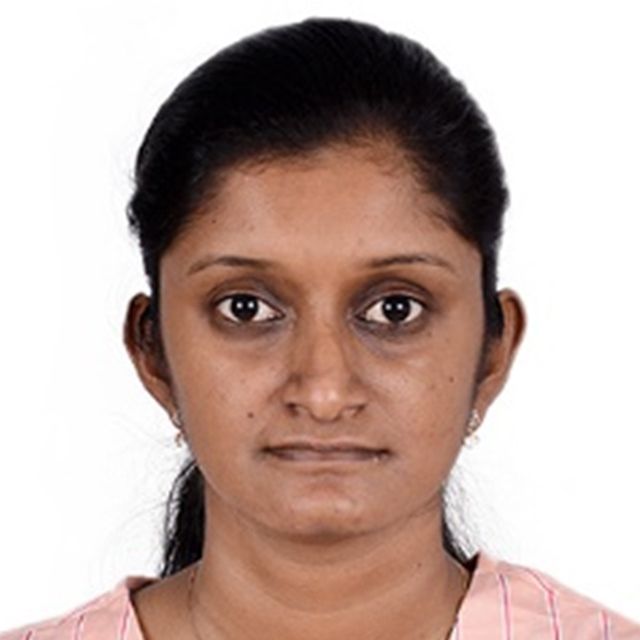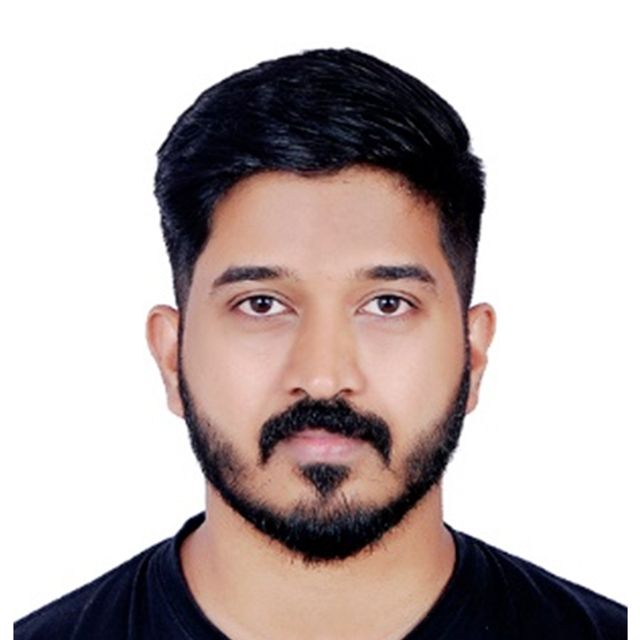Abstracts
Keynote: Higher Efficiency with Scalability in Semiconductor and Mixed EV Architecture
9:10–9:35
We are in the transition into clean, safe, and software-defined mobility, with new high-voltage power technologies making electrified vehicles more competitive and governments pushing for CO2 neutrality. This is a disruptive paradigm shift for established OEMs. The next challenge is to deliver the promise of software-defined vehicles, which requires increasing computing power, managing the data complexity within the car, and connecting the car with IoT/clouds. 80 percent of this innovation is based on semiconductors that power the next generation of vehicle electrical/electronic architectures.
These new architectures need to address real-time, functional safety and security while distributing and computing gigabytes of data from the sensors across the car backbone to enable innovative applications such as autonomous driving. Additional requirements include safe power distribution, redundancy, and diagnosis to guarantee “Always Power On” for operating the car. Lastly, software-defined vehicles will need to provide customers with new services that will be constantly updated over the air. The semiconductor industry is already providing a variety of products, including SoC and MCU, which address these challenging requirements and support mixed EV architectures.
This hardware offering needs to be complemented with modern R&D processes in which simulation and modern SW update management are standard elements. Infineon is committed to push digital twins and provide models to an environment which allows faster development, enabling design verification and approval processes at an early stage. With this, Infineon can provide a secure supply and shorter time to market and deliver the latest and most appealing technologies that the next generation of customers is expecting.
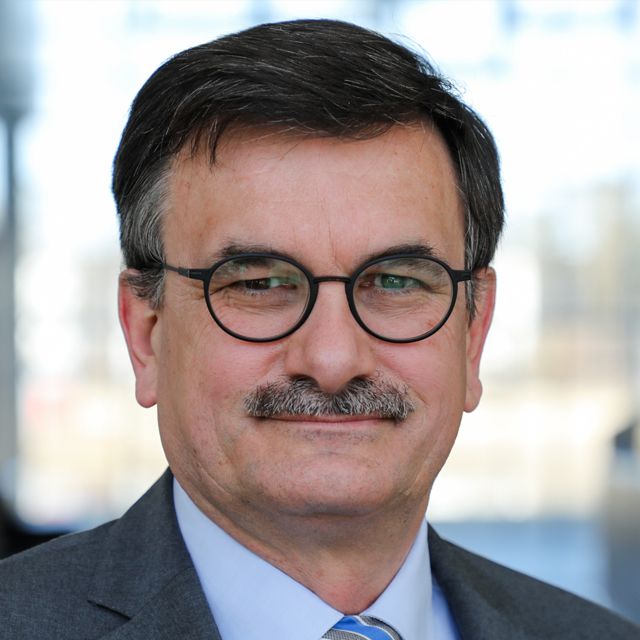
Hans Adlkofer, Infineon
Keynote: Accelerating Development of Clean, Safe, Automated Software-Defined Vehicles
9:35–10:00
In this talk, Andy Grace, the VP of Engineering at MathWorks, will share his vision on how Model-Based Design is evolving to accelerate the design and development of clean, safe, autonomous software-defined vehicles. Through this talk, the audience will learn about the impact that MathWorks is having in the automotive industry and the investments that are in the making to address new industry challenges.

Dr. Andy Grace,
MathWorks
SDV: Integrating Simulink C++ Generated Code in Android Automotive Environment
10:00–10:25
High-performance computing and service-oriented architecture (SOA) are emerging as the technological foundations to provide the computing power and the high level of abstraction required to accelerate the development of software-defined vehicles. Abstraction from the hardware is typically provided through middleware and operating systems such as Android Automotive OS. In this context, the integration of application software with the middleware is crucial to establish an agile, automotive-grade software development process.
This presentation from Renault demonstrates the ability of Simulink® to generate C++ application code that can be integrated and run in Android Automotive OS environment using Android Binders and the Android Interface Definition Language.
Based on SOA concepts, this demonstration shows a control loop model that uses methods and events for service-oriented communication.

Rémy Brugnon, Renault Group
Software Architectures and Virtual Integration in Model-Based Design
11:00–11:25
The rapid increase in automotive system and software complexity demands a design process that can help maintain consistency and traceability all the way from high-level system design to software implementation. Model-Based Design approaches offer distinct advantages that can help go from software architecture conceptualization to deep component design and back up to software integration and testing, enabling higher quality and reliability of the final product. In this presentation, you’ll see how Simulink® is rapidly evolving to realize this vision. Recent investments have helped create an environment that enables the detailed design and simulation of software architectures and easy integration of models and code components for early virtual integration.

Ramamurthy Mani, MathWorks
CI/CD 2.0: From Scripted Jenkins Pipelines to Process Advisor
11:25–11:50
At Continental, we implemented the first Jenkins-based continuous integration pipeline in 2017 to accelerate agile, model-based vehicle software development. That pipeline was then heavily customized over the years. As a result of this customization, we had to spend more and more maintenance effort for CI pipeline itself, making any process update very time-consuming.
We decided to use the new Process Advisor App to rebuild and simplify the Jenkins Pipeline and to bring all Jenkins-specific parts of the pipeline into MATLAB®, including JFrog Artifactory and Conan.
In this presentation, we demonstrate the different aspects, findings, and advantages of this new approach.

Martin Römpert, Continental Automotive
VDA SIL Standard: Change in SW and System Development in the Automotive Industry
11:50–12:15
Software-in-the-loop (SIL) is the enabler of continuous and agile development processes in the automotive industry. Without SIL, the release of open-context systems with a high number of combinations of possible input data (such as automated driving) is practically impossible. In the future, it can be assumed that most software tests in the automotive industry will be carried out in SIL environments. To work across companies, domains, and platforms, it is necessary to standardize the SIL interfaces across the industry. Without standardization, many individual interfaces would be created. The effort and costs involved would be enormous. SIL standardization is an essential requirement for successful virtualization and automation of software testing in the automotive industry. The VDA project group SIL Standardization has been publishing standards for technical interfaces of the SIL infrastructure since the end of 2019.
MathWorks supports the standardization effort by actively participating in the VDA project group and will give an overview of upcoming features for FMI 3.0 as a base for Simulink® as an integration platform.

Deborah Ferreira, MathWorks
Women in Tech Forum: Lunch and Networking
13:30–14:00
As part of the Women in Tech initiative, MathWorks will be organizing a meeting point within the exhibition area at this year’s MathWorks Automotive Conference. Interested delegates can learn about the initiative and DEI (diversity, equity, and inclusion) at MathWorks. Use this opportunity to talk to our technical experts, discuss experiences, and network with other industry peers.

Eva Pelster, MathWorks
How to Develop Model-Based AI Software for AURIX TC4x in MATLAB and Simulink
14:00–14:25
The traditional approach to embedded software development is burdened with many potential pitfalls like vulnerability to errors and time-consuming development due to manual peripherals configuration. This presentation introduces an alternative approach for embedded software development based on Simulink® models to overcome these disadvantages. Based on the automotive-driven use case of trajectory control, we want to give a best practice example for end-to-end development and deployment of AI-enhanced embedded applications. Using the Embedded Coder® Support Package for Infineon AURIX™ Microcontrollers, all necessary hardware components such as peripherals and memory units can be easily configured and simulated from the level of GUI. Learn how Simulink enables you to generate an optimized code for the target platform Infineon AURIX™ TC4x. The AI component will be compiled with a separate toolchain and combined with binary compiled out of generated code.

Mateusz Chmurski,
Infineon
Electrothermal Modeling and Analysis of Battery Packs
14:25–14:50
The electric powertrain is becoming the leading solution in the passenger car sector. However, the components of the electric powertrain pose new development challenges for the automotive engineers. One of these components is the battery system. For its sizing, engineers need to consider different aspects such as the electrical behavior of the battery and the monitoring and management of its temperature. These challenges call for complex models that span different physical domains.
This talk demonstrates how engineers can model battery cells based on predefined or custom components. First, learn how to model a cell and—in the case of a custom cell—how to refine its electrical and thermal design as desired. The resulting cell model is then scaled up to build modules and complete battery packs with Simscape Battery™. For this scope, it is possible to use either an API or an intuitive interactive app.
In the second step, the resulting battery model is tested for performance and electrical and thermal behavior using selected test cycles. The model is then used to analyze the thermal behavior of the battery and design a liquid cooling system.

Dr. Lorenzo Nicoletti,
MathWorks
Powertrain Simulation for Concepts Evaluation, Range Estimation, and Calibration
14:50–15:15
The transition to zero emission and the demand for increasing levels of autonomy present many challenges for the development of modern heavy-duty vehicles (HDVs). Simulation plays a key role in accelerating the vehicle design stages, anticipating or preventing integration issues, and gaining competitive advantages.
In collaboration with MathWorks, MAN Truck & Bus has developed FASIMAN, a modular simulation tool based on Simulink for longitudinal dynamics, powertrain concept evaluation, energy consumption and range estimation. It uses energy management strategies and virtual testing of ECU functionalities and drivetrain calibration to support ADAS development and emission activities. FASIMAN’s modular approach enables it to model propulsion and vehicle configurations that are relevant for HDVs, including ICE, BEV, and FC.
In this presentation, see an overview of FASIMAN’s modular architecture and main features, including distinction between physical models and controls, bus system modeling, ECU integration (MIL), database connectivity, big data usage for load cycle derivation, and cosimulation.
We’ll also briefly present a fuel cell truck simulation for evaluation and design of the drivetrain concept, cooling concept, and supporting the control function development.
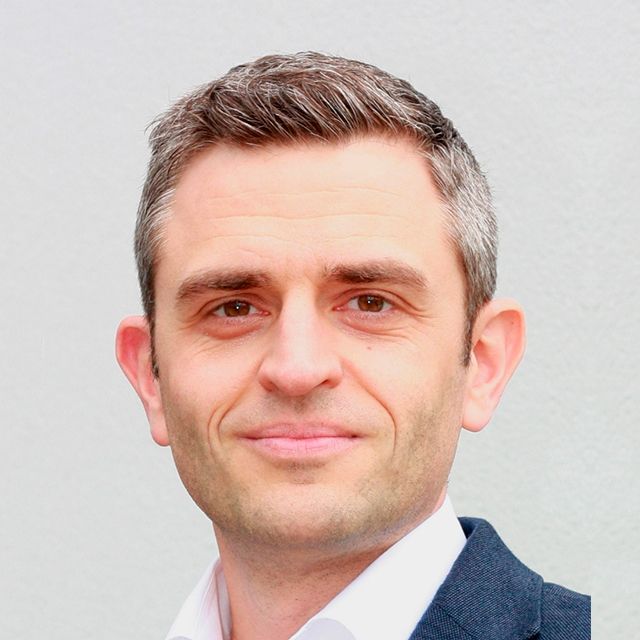
Dr. Christian Haupt,
MAN Truck & Bus
Streamline Automotive SPICE Compliance Using Model-Based Design
15:15–15:40
Automotive SPICE allows organizations across the automotive supply chain to assess and improve the capability levels of their own processes as well as those of their suppliers. Consequently, ASPICE-compliant processes allow suppliers to satisfy and even exceed customer expectations.
To effectively achieve ASPICE compliance, organizations choose to use the Simulink® product family. This is because automation capabilities in model-based systems engineering (MBSE) allow engineers to focus on their state-of-the-art products and innovations and leverage tooling support to achieve process quality aspects like traceability, consistency, and documentation.
Starting in R2022a, the IEC Certification Kit provides a mapping document between base practices of engineering processes in Automotive SPICE and use cases for Simulink.
In this presentation, see how these products work together in a streamlined way to support your ASPICE compliance efforts when it comes to system and software engineering processes.
Topics include achieving ASPICE compliance with MBSE by performing base practices of system engineering processes, maintaining consistency and traceability across your system architecture design and V&V artifacts, ensuring continuity of your system and software development artifacts, shifting your verification to the left and detecting issues as soon as they are introduced throughout the development process, and showing evidence for compliance with automatically generated artifacts.
How to Achieve Full Coverage of Configurable Code with Polyspace
16:10–16:35
Software is becoming more and more important in the semiconductor industry to further differentiate between vendors. Silicon companies are developing software to provide a software stack to leverage their silicon capabilities and to enable their customers to quickly jump-start their designs by providing a basis for ready-to-use software and middleware. Using software variants is becoming a popular method of supporting the diversity of possible hardware configurations, preventing source code duplication, and minimizing the footprint of the executable firmware.
Due to the heavy use of software variants, the exponential increase in possible software configurations is reaching the limits of traditional verification and validation methods. This presentation by STMicroelectronics proposes a novel framework that uses Polyspace® to analyze a selected subset of all software variants while providing the same guarantees as if all combinations had been analyzed, thereby reducing verification efforts without losing quality. This framework leverages results from structural code coverage to select the subset of software variants on which tests are executed and static code analysis performed.
Before releasing the software, developers can detect bugs and violations of coding guidelines for every possible software configuration, which would be impossible with either static analysis or dynamic test in isolation.

Cinzia Tomasello,
STMicroelectronics
Agile Behavior-Driven and Test-Driven Development with Model-Based Design
16:35–17:00
Model-Based Design and the agile practices of behavior-driven development and test-driven development play an important role in modern, software-intensive, large-scale development projects. This presentation illustrates the benefits of a combined approach based on best practices established through years of work with engineering organizations.

Dr. Marc Segelken, MathWorks
Making the Most of FPGAs for Automotive Power Electronics Development
17:00–17:25
Designing efficient power electronics modules for EVs involves making informed choices about circuit topologies and semiconductor technologies and integrating them with sophisticated control algorithms that require low latency and high sampling rates. FPGA-based platforms have emerged as the preferred option for accelerating the development and testing of power electronics, allowing for real-time simulation while offering an attractive deployment target for control algorithms, both in the concept phase and in production.
Early collaboration between diverse teams is critical to the success of this type of project. In this talk, we discuss an integrated workflow that enables target-independent FPGA deployment of customized power electronics and e-motor plant models for real-time simulation with varying degrees of fidelity, including average-value, averaged-switch, piecewise-linear, and nonlinear models. Control algorithms can also be deployed automatically for rapid control prototyping. This workflow enables systems, algorithms, hardware, and software engineers to work simultaneously and efficiently, resulting in quicker iterations and fewer errors in system specification and implementation.
The final hardware target for algorithms is often unknown during the early stages of a project. To this end, this workflow allows for model-based hardware-software co-design or a seamless transition between hardware and software implementations. The implementation models can also be easily repurposed for different FPGA target devices or transitioned to ASIC since target-independent RTL code is generated. Finally, the toolchain is certified by TÜV SÜD to be suitable for ISO 26262, ASIL A–D. .

Dimitri Hamidi, MathWorks
Virtual World Generation for BMW Driving Simulation
14:00–14:25
BMW operates the world’s most sophisticated facility for simulating real-life driving conditions with more than 14 simulators and usability labs aiming to provide the ideal simulation for every phase of the vehicle development process. Discover how BMW uses RoadRunner as part of their virtual world generation process to meet the requirements for high-fidelity simulation of real-life roads and traffic scenarios.

Hubert Cao,
BMW
Advanced Scene and Scenario Creation Workflows for Virtual Testing
14:25–14:50
Real-world scenario-based testing plays a critical role in ensuring the safety of ADAS/AD functions. Virtual testing is scalable in the cloud, efficient, safe, and repeatable. It enables you to test every incremental change of your function.
This presentation elaborates on some advanced capabilities of the RoadRunner product family in combination with Automated Driving Toolbox™.
The Scenario Builder for Automated Driving Toolbox support package enables users to quickly create scenarios from existing vehicle sensor data such as existing test drives or vehicle traces.
Once a seed scenario is defined, variations can be generated using the Scenario Variant Generator for Automated Driving Toolbox support package for SOTIF-related activities.
Engineers can bring in their own custom HD maps via the RRHD interface to build scenes.
Deploying AI for Mission Profile Classification of Construction Equipment
14:50–15:15
A known challenge in designing construction equipment is identifying the correct mission profile while the vehicle is operating in the field. A mission constitutes a cyclical execution of a sequence of vehicle movements. Different missions can include similar movements with different execution speeds or arm positioning.
The main purpose of this project is to develop a model based on artificial intelligence that can recognize one of 20 possible vehicle missions of a wheel loader, directly on-board and in real time, thanks to the data collected from the available sensors.
Mission profile recognition is fundamental to enabling innovative applications such as:
- Real-time, on-board controls for an optimized customer experience based on the current mission
- Reliability analysis through failure contextualization
- Market segmentation through understanding of customers’ behaviors
The identified mission can be used to automatically adjust vehicle parameters at runtime. For example, a pick-and-place maneuver can be supported by smooth aggressiveness for hydraulics, while hauling or stock piling operations can be supported by high aggressiveness. Alternatively, the vehicle control unit can suggest the best vehicle setting to support the current task through a message on the dashboard display. Furthermore, the identified mission profile is transmitted to a remote server to enable fault contextualization and to improve fleet management and maintenance services. At the server side, the faults are then correlated to the occurrence of certain missions to better identify the critical ones. This data is used to guide the vehicle design to better address such critical missions, significantly improving energy efficiency and vehicle reliability.
This project was developed by CNH Industrial in partnership with MathWorks Consulting Services relaying their expertise to design an AI solution with Statistics and Machine Learning Toolbox and using automatic code generation to quickly deploy the vehicle software.

Andrea Gravili,
CNH Industrial
Demystifying DevOps: A Cloud Workflow for Fleet Analytics with Machine Learning
15:15–15:40
DevOps can sound imposing, but it can bring tremendous advantages to engineering workflows in the cloud by streamlining processes, adding maintainability and fostering a collaborative culture with IT and operations.
In this session, see a DevOps-style workflow for monitoring the state-of-health (SOH) of a battery fleet. Predictive maintenance—a powerful method built on machine learning techniques—can help to tackle this challenge, but it might be difficult or expensive to deploy and update the algorithms in the vehicle. We will demonstrate a cloud-based predictive maintenance system for monitoring the fleet that leverages streaming data to integrate your analytics with industry-standard technologies.
Learn how to develop an SOH prediction model and a drift detection model in MATLAB®. Using the Streaming Data Framework for MATLAB Production Server™, we can move from developing our algorithms with test data in file-based timetables to integrating with cloud streaming messaging services like Apache Kafka. Build and test these algorithms automatically using a CI/CD pipeline, deploying to an Azure Kubernetes Service cluster. Finally, the deployed system includes model performance monitoring using a dashboarding system for alerts and trends, and a time-series database to record historic data, which you can use to retrain your models. Using Infrastructure as Code techniques, we can easily update, rebuild, or roll back changes to the operational system.
See how engineering teams can thrive in a DevOps culture using MATLAB to operationalize their algorithms and bridge the gap between IT and Ops teams.
Quality Inspection Based on Deep Learning and a Data-Centric Approach
16:10–16:35
Automated quality inspection of components in industrial production environments is one of the main requirements for achieving current productivity and quality goals. Since conventional rule-based inspection systems only partially meet these requirements and industry research projects in this area are hardly practicable, Miba AG has developed its own framework for the quality inspection of its high-quality components to achieve these goals in its production facilities. In this technical presentation, see and discuss the results of this framework based on deep learning with MATLAB®.

Christian Prechtl, Miba AG
Service-Oriented Arbitration of ADAS Features with Model-Based Design
16:35–17:00
The main challenge of AD/ADAS is to imitate and outperform a human driver’s responsiveness to dynamic situations. The arbitration module in an AD/ADAS system plays a major role in making decisions for vehicle control.
The arbitration module is a central processing module that makes decisions based on track estimation, crash mitigation, and safety to orchestrate priorities and actuations of longitudinal, lateral, or driver control. This makes it a critical module. Any performance issue in this module could have a major impact on the vehicle’s safety and performance.
In signal-based architectures, an easy update of the application is not possible because it will impact the arbitration control scheme, which would lead to an entire software update and revalidation that’s not always possible or desirable.
By contrast, service-oriented architectures (SOAs) enable an easier update of an application or porting of a new application. The service registry and service discovery enable the client to locate new service providers easily, facilitating the integration of new features in the architecture.
Moreover, the arbitration in SOA improves the performance and quality thanks to high-speed information exchange among control applications.
This presentation includes a use case to compare the signal-based and service-based arbitration performances.
Targeting GPUs for Automotive Applications
17:00–17:25
Many of today’s signal processing, image processing, and deep learning applications in the automotive field can benefit massively from using GPUs. This is equally true for production code and prototyping purposes. See how automated CUDA code generation from MATLAB® algorithms and Simulink® models can be used to accelerate applications such as lidar, camera, and radar sensor data processing. A complementary toolchain allowing MIL, SIL, and PIL simulations as well as performance analyses is key to efficient development workflows. Using the same Simulink model or MATLAB function, you can target both desktop GPUs as well as SoCs like the NVIDIA DRIVE® and NVIDIA Jetson™ platforms.

Christoph Stockhammer, MathWorks

Simone Hämmerle
MathWorks
Simone Hämmerle works as a product specialist for ADAS/AD at MathWorks. Her focus is on scene and scenario generation, perception, planning, and ROS. Before joining MathWorks, she worked as a research assistant for the chair for Image Understanding and Knowledge-Based Systems at Technical University of Munich. Simone holds a diploma degree in computer science from the Augsburg University of Applied Sciences and a master’s degree in biomedical engineering from the Furtwangen University of Applied Sciences.

Dimitri Hamidi
MathWorks
Dimitri Hamidi is a senior application engineer at MathWorks focusing on FPGA design, image processing, and sensor fusion and tracking. Prior to joining MathWorks, he was as a research associate at the German Aerospace Center (DLR) and worked as an algorithm engineer in Continental’s advanced engineering department for ADAS and AD. Dimitri studied electrical engineering at the Technische Universität München.

Dr. Mohammad Abu-Alqumsan
MathWorks
Dr. Mohammad Abu-Alqumsan is the product manager for the IEC Certification Kit at MathWorks. He focuses on functional safety and consults with industry participants on qualifying tools and developing workflows that comply with popular certification standards such as ISO 26262, SOTIF, ISO 21434 and Automotive SPICE. Before joining MathWorks, he worked at Validas AG as a project manager and research software engineer. Mohammad has a doctorate degree in brain-computer interfaces and robotics from the Technical University of Munich.

Gernot Schraberger
MathWorks
Gernot Schraberger is a principal application engineer in the Munich office of MathWorks with 14 years of experience. His main application focus is on electrification, physical system modeling, and control design. Prior to joining MathWorks, he worked as a development engineer for motor control and embedded software engineering in the machinery industry for electronic assembly systems. Gernot holds a master’s degree in automation engineering from the Technical University of Munich.

Dr. Lorenzo Nicoletti
MathWorks
Dr. Lorenzo Nicoletti is an application engineer in the MathWorks Munich office. His main application focuses are electrification, virtual vehicles, and physical modeling. Prior to joining MathWorks, Lorenzo collaborated in a research project with AUDI AG focusing on the parametric modeling of battery electric vehicles. In the scope of the project, he obtained a Ph.D. in mechanical engineering from the Technical University of Munich. Prior to the Ph.D., he obtained an M.Sc. in mechanical engineering and an M.Sc. in automotive engineering from the Technical University of Munich.

Eva Pelster
MathWorks
Eva Pelster works as a senior application engineer and supports customers in the areas of physical systems modeling and Model-Based Design. Over the last several years she has supported Women in Tech efforts at local MATLAB EXPO and MathWorks Automotive Conference events. Eva joined MathWorks in 2013 as a training engineer and prior to MathWorks worked for an engineering consulting company focusing on modeling and simulation projects. Eva holds a degree in aerospace engineering from the University of Stuttgart.

Dr. Andy Grace
MathWorks
Andy Grace is the vice president of engineering for design automation tools. He is responsible for simulation, code generation, and testing products. He has more than 25 years of experience in software development and has been involved in the development of a number of MathWorks products, including Simulink, Simulink Coder, Control System Toolbox, Optimization Toolbox, and Stateflow. He received his Ph.D. in computer-aided control system design (CACSD) from Bangor University. His area of research was the application of CACSD using multi-objective optimization techniques.

Rémy Brugnon
Renault Group
Rémy Brugnon is a software architect for innovations at Renault. He has more than 20 years of experience in Model-Based Design and embedded software. For the past five years, he studied the impacts of service-oriented architecture on model-based development for reactive systems, particularly in body domain.
He has an engineering degree from ESEO, an electronics and computer engineering school in France.

Advait Valluri
MathWorks
Advait Valluri is senior application engineer at MathWorks delivering workflow solutions for the development of ADAS/AD functions. His expertise is concentrated on leveraging RoadRunner and Automated Driving Toolbox to enhance user outcomes. He brings a broader perspective to product development and business strategy by integrating his industry experience with the economic and legal facets essential to the commercialization of automation innovations.
Before joining MathWorks, Advait amassed over ten years of experience in development and product management of chassis systems and ADAS/AD modules. He holds a master’s degree in automotive engineering from RWTH Aachen University and bachelor’s in mechanical engineering from Osmania University in India.

Dr. Marc Segelken
MathWorks
Marc Segelken is a principal application engineer in verification and validation of safety-related embedded systems, support for standards, and systems engineering.
Before joining MathWorks in 2008, Marc was working at the OFFIS research institute as a project manager in the department of safety critical systems. He holds a Ph.D. in computer science from the University of Oldenburg specializing in the area of formal verification of embedded systems.

Ramamurthy Mani
MathWorks
Ramamurthy Mani is the engineering director responsible for enhancing the core language of Simulink with a special focus on system and software architectures and large-scale simulations. Mani started at MathWorks in 1998 in software development and has made several contributions to the modeling capabilities in Simulink, System Composer, and SimEvents. More recently, he and his team have been focusing on workflows for model-based systems engineering, modeling distributed software architectures, and multi-agent system-of-system simulations. Mani holds a Ph.D. in electrical engineering from Boston University.

Martin Römpert
Continental Automotive
Martin Römpert works as a senior expert model-based development in the Autonomous Mobility and Safety division at Continental Automotive in Frankfurt, Germany. He advises software development teams on best practices with model-based development. Before joining Continental, Martin was a team manager at ITK Engineering. Martin holds an electrical engineering degree from Karlsruhe Institute of Technology.

Amir Sardari
Robert Bosch
Amir Sardari is senior software expert in the Stuttgart Weilimdorf office of Bosch with 15 years of experience in different product development areas at Bosch. His focus is on software-in-the-loop for automotive electronic applications, virtualized release, and system simulation for electrification and ADAS systems.
Amir has a degree in electrical engineering from the Technical University of Dortmund.

Mateusz Chmurski
Infineon
Since December 2021, Mateusz Chmurski has been employed at Infineon’s Development Center in Dresden, Germany as a senior engineer in artificial intelligence algorithms working on trajectory control algorithms. From 2015 to 2018, he was a research assistant at the Infineon Technologies laboratory in Deggendorf. In 2018, he worked at Infineon headquarters in Munich as Ph.D. student developing AI algorithms on edge computing platforms.
Mateusz Chmurski received a B.Sc. in embedded system design and an M.Sc. in artificial intelligence in 2016 and 2018, respectively, from the Technical University of Lodz in Poland, where he is currently pursuing a Ph.D. in artificial intelligence on the edge.
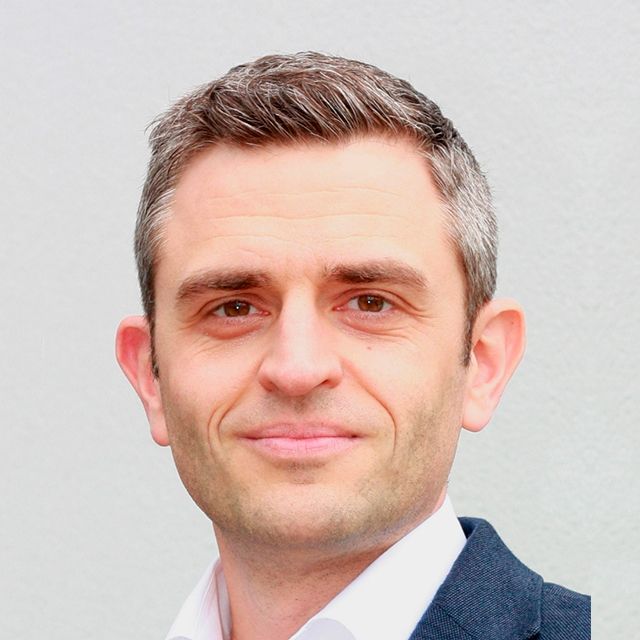
Christian Haupt
MAN Truck & Bus
Since 2010, Dr. Christian Haupt has been a senior development engineer for longitudinal powertrain simulations at MAN Truck & Bus in Munich, Germany. He is responsible for the powertrain simulation tool development. After receiving his degree in mechanical engineering from the Technical University of Berlin in 2004, Christian worked as a research engineer at the Institute of Internal Combustion Engines (LVK) at the Technical University of Munich and completed his work in thermal management simulation with a doctorate.

Cinzia Tomasello
STMicroelectronics
Cinzia Flavia Tomasello works as senior software engineer for the automotive division at STMicroelectronics. She contributes to developing internal testing tools used to facilitate the project lifecycle from development to release.
To improve execution performance and code coverage, she maintains the tools involved in detecting static and dynamic analysis and evaluates new tools against those currently used.
Cinzia has been a pioneer in using DITA XML for document generation. Prior to joining STMicroelectronics, she was an expert in CAN protocol for programming ECUs at Magneti Marelli in Catania, Italy.

Hubert Cao
BMW Group
Hubert Cao is leading graphics and virtual reality development for driving simulation at BMW. His responsibilities include increasing visual fidelity and optimizing performance of the visualization, ensuring synchronized graphics across large projection and LED clusters, and the creation of 3D virtual worlds required for a variety of driving simulation use cases. Hubert holds a master's degree in computer science from the Technical University of Munich.

Andrea Gravili
CNH Industrial
Andrea Gravili leads the advanced electronics team for construction equipment at CNH Industrial. He has 15 years of experience in the automotive industry, mainly focusing on control system design and model-based software development. Prior to joing CNH Industrial, he worked at General Motors Powertrain Europe and MERMEC. He studied automation engineering and has a master’s in artificial intelligence. He is the author of around 50 patents.

Nicole Bonfatti
MathWorks
Nicole Bonfatti is a product marketing manager focused on application deployment with MATLAB Production Server with over 10 years of experience at MathWorks. She has additional experience incorporating deep learning models into both embedded systems and web services from her previous employment at an AI startup. She holds a BS in computer science, an MS in management of technology, and several IT certifications.

Martin Büchel
MathWorks
Martin Büchel is a senior application engineer at MathWorks in Munich, Germany. He assists customers in selecting and utilizing MATLAB products in the automotive sector. Prior to joining MathWorks, he served as a lead engineer in powertrain calibration methodology and tool development. He also worked at a research institute, focusing on reinforcement learning and control for automated vehicles. Martin holds an M.Sc. (Dipl. Ing.) in mechanical engineering from Graz University of Technology in Austria and a Ph.D. from the Chair of Robotics, Artificial Intelligence, and Real-time Systems at the Technical University of Munich.
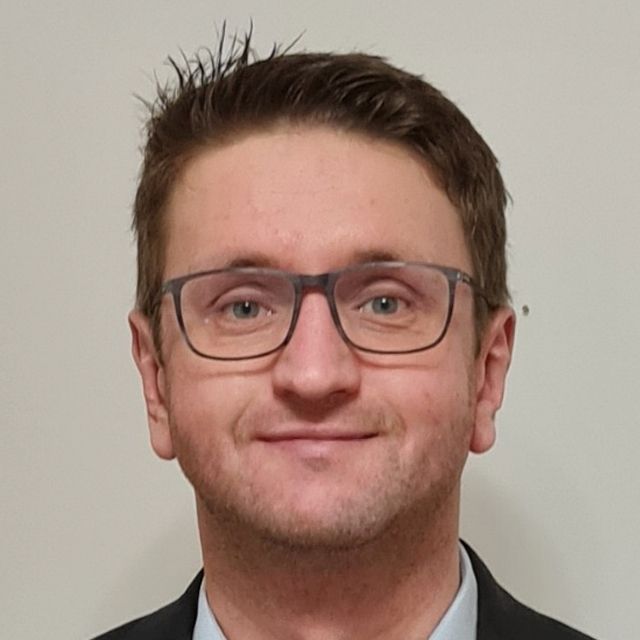
Christian Prechtl
Miba AG
Christian Prechtl is product owner for quality inspection and machine learning at Miba AG. He has worked in machine learning, computer vision, and robotics for more than 15 years. In recent years, his focus has been on the development of artificial intelligence and quality inspection applications based on a data-centric approach and deep learning. He holds a master's degree in robotics, cognition, and intelligence from the Technical University of Munich in Germany.

Darshana Unnikrishnan
KPIT Technologies
Darshana Unnikrishnan is a designer at KPIT technologies and has more than 9 years of experience in guidance and control algorithm development. Currently she is working on software architecture for the software-defined vehicle program. She has previously worked on ADAS feature development using MATLAB and Simulink, and in verification and validation of the same. She has a bachelor of engineering in electrical and electronics and master of technology in control systems.

Nandakumar Kaiprath
KPIT Technologies
Nandakumar Kaiprath is working as a technical lead at KPIT Technologies and has more than four years of experience in algorithm development and MATLAB and Simulink model-based development of ADAS features like Emergency Steering Function, Emergency Avoidance, and Trailer Reverse Parking Assist (path planning and controller algorithm development). He is currently working on application development for the software-defined vehicle program. He completed his master’s in electrical engineering at NIT Calicut in India.

Christoph Stockhammer
MathWorks
Christoph Stockhammer joined Mathworks in 2012. His focus areas include mathematics, data analytics, machine and deep Learning, and the integration of MATLAB software components in other programming languages and environments. He holds a M.Sc. in mathematics with an emphasis on optimization from the Technical University of Munich.

Deborah Ferreira
MathWorks
Deborah Ferreira is the development lead for Text Analytics Toolbox. She joined MathWorks in 2022 and brings with her extensive knowledge in natural language processing (NLP). Deborah earned her Ph.D. in NLP from The University of Manchester, where she conducted research on improving NLP systems to achieve better natural language understanding over scientific text. Her research has been published in several leading NLP conferences.
Seleccione un país/idioma
Seleccione un país/idioma para obtener contenido traducido, si está disponible, y ver eventos y ofertas de productos y servicios locales. Según su ubicación geográfica, recomendamos que seleccione: .
También puede seleccionar uno de estos países/idiomas:
Cómo obtener el mejor rendimiento
Seleccione China (en idioma chino o inglés) para obtener el mejor rendimiento. Los sitios web de otros países no están optimizados para ser accedidos desde su ubicación geográfica.
América
- América Latina (Español)
- Canada (English)
- United States (English)
Europa
- Belgium (English)
- Denmark (English)
- Deutschland (Deutsch)
- España (Español)
- Finland (English)
- France (Français)
- Ireland (English)
- Italia (Italiano)
- Luxembourg (English)
- Netherlands (English)
- Norway (English)
- Österreich (Deutsch)
- Portugal (English)
- Sweden (English)
- Switzerland
- United Kingdom (English)








